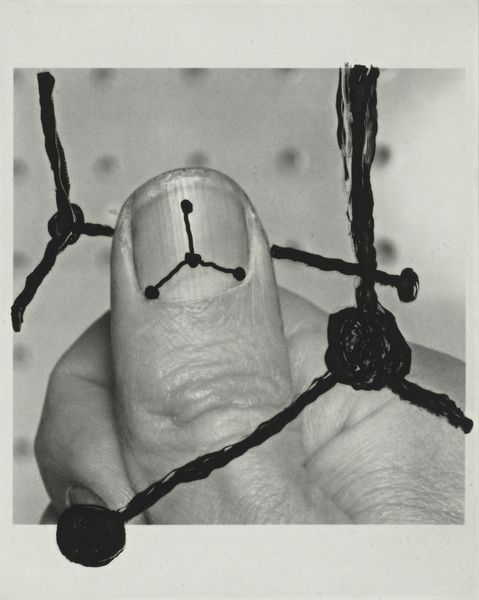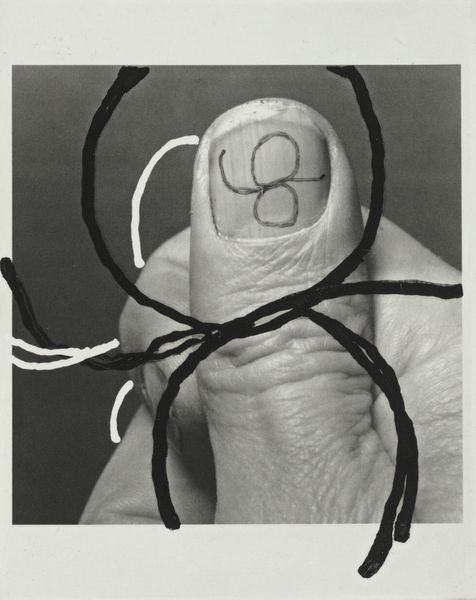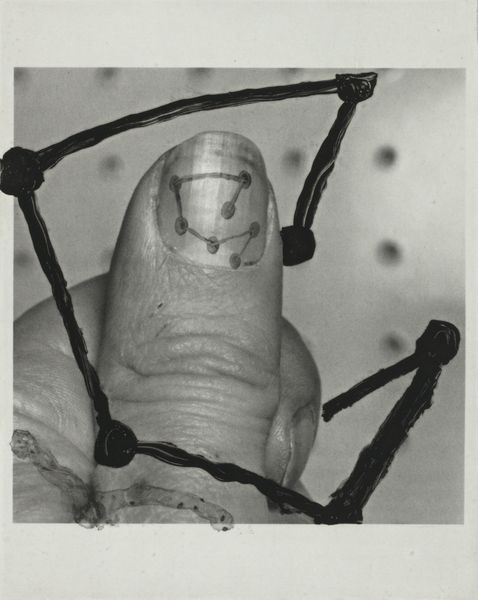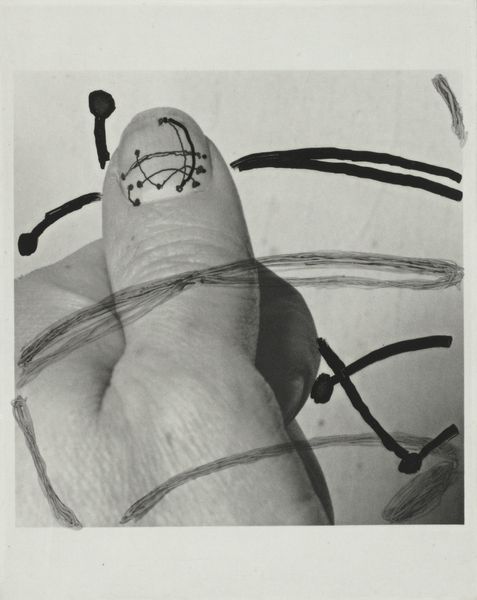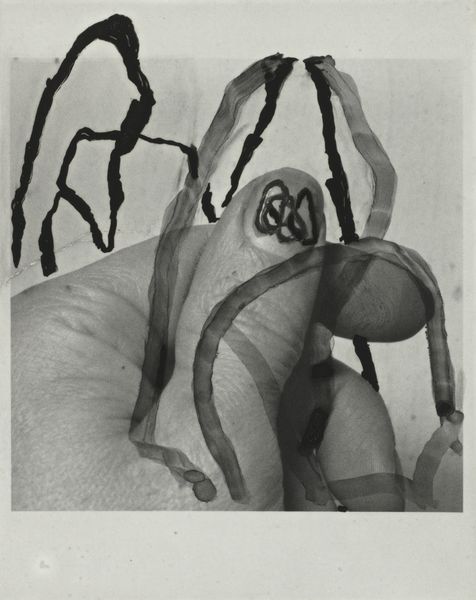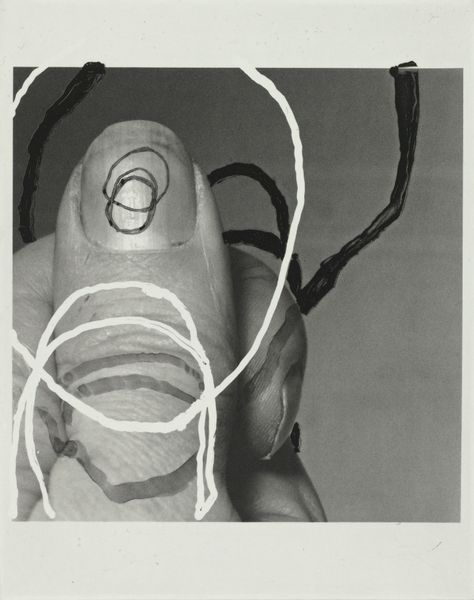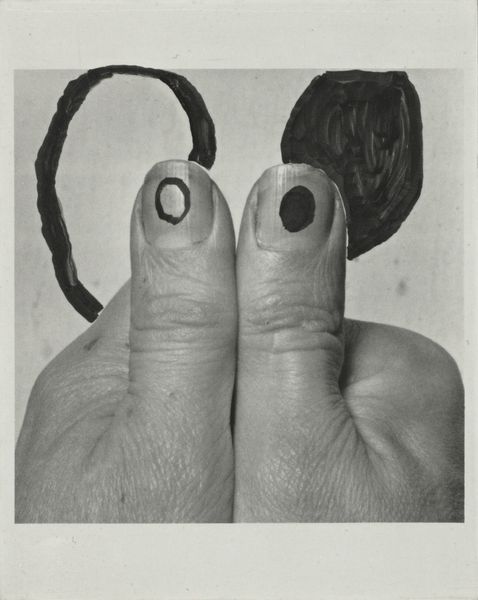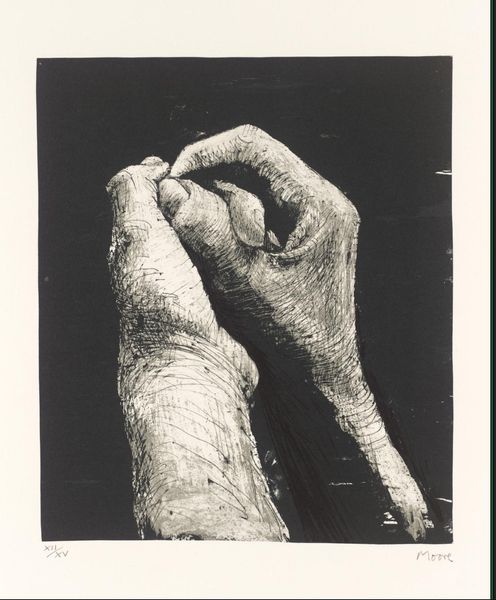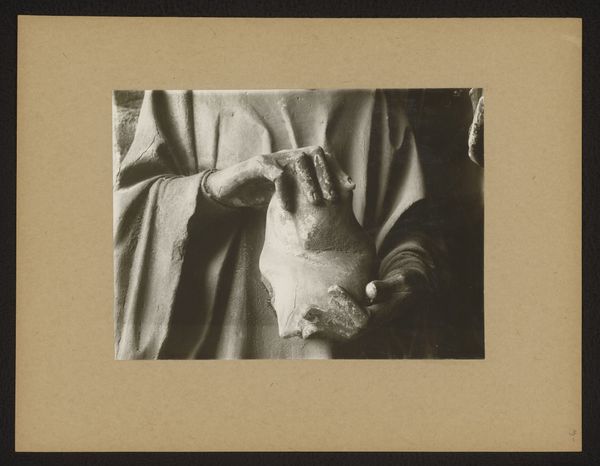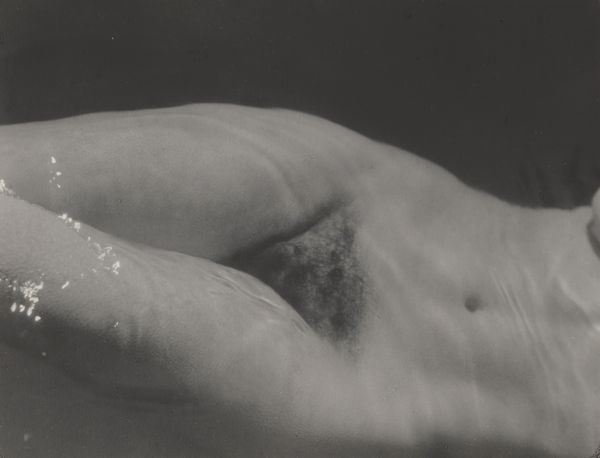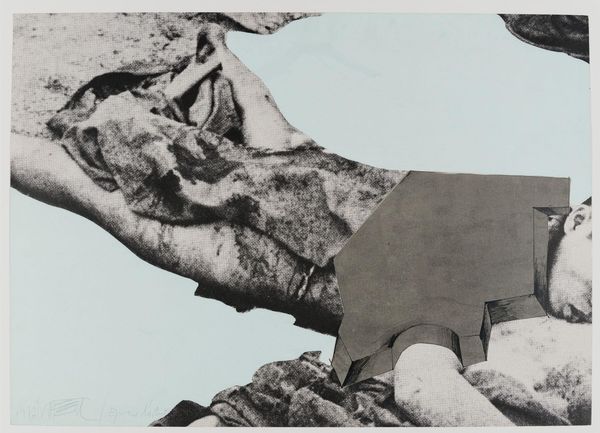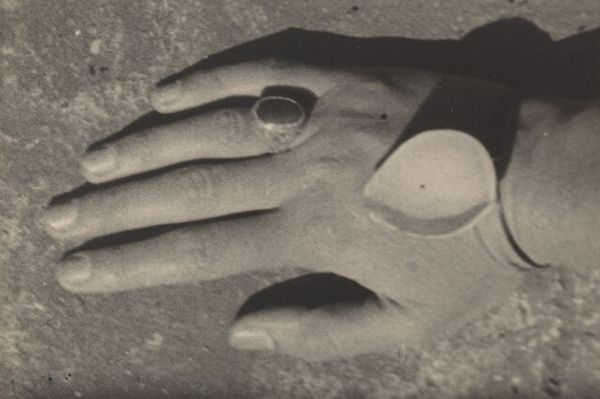
drawing, print, photography, ink
#
portrait
#
drawing
#
contemporary
# print
#
charcoal drawing
#
photography
#
ink
#
black and white
Dimensions: image: 25 × 20 cm (9 13/16 × 7 7/8 in.) sheet: 31.6 × 24.2 cm (12 7/16 × 9 1/2 in.)
Copyright: National Gallery of Art: CC0 1.0
Editor: This is "E. (All Thumbs)" created by Al Taylor in 1997. It seems to be a photographic print, in black and white. It's odd, a thumb takes up most of the frame and it has what looks like ink drawings on and around it. What’s your read on it? Curator: What strikes me immediately is how Taylor appropriates and subverts the traditional genre of portraiture. How does presenting a thumb, usually a peripheral detail, challenge our expectations of subject and representation? Think about how power dynamics usually influence portraiture. Editor: I hadn't thought about that. Is the 'E' in the title significant, relating it to a specific person? Curator: Potentially, or it could be a red herring, pushing us to consider the abstract qualities of the thumb rather than a literal portrayal of someone. I mean, how do institutions elevate certain figures while ignoring the mundane realities that form the backbone of society? This artwork maybe questions that dynamic. Editor: It definitely shifts the focus. I was initially put off by how…unrefined it seems, almost like a snapshot. Curator: Precisely. Taylor disrupts established hierarchies. He forces us to reconsider our aesthetic biases. The raw presentation is a conscious choice, aligning him with other contemporary artists critiquing the polished presentation of artwork in established institutions. Do you think the lines are about a constellation or a connection to a higher power? Editor: Perhaps it is making that connection. It’s given me a new appreciation for how a seemingly simple image can challenge such broader ideas about representation and artistic value. Thanks! Curator: Absolutely, it’s a powerful reminder of how art institutions play a role in establishing canons, and the politics involved in selecting what deserves our attention.
Comments
No comments
Be the first to comment and join the conversation on the ultimate creative platform.
